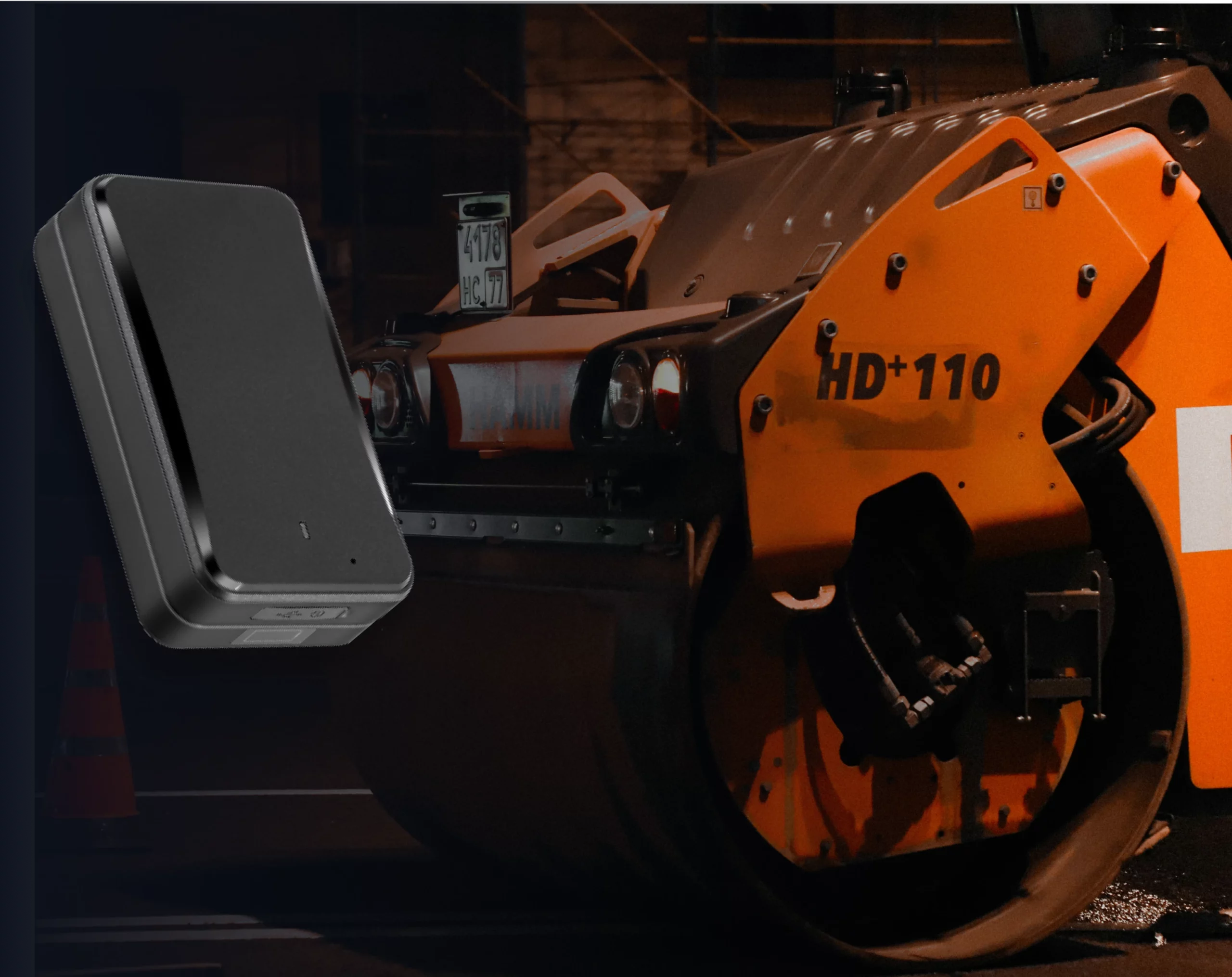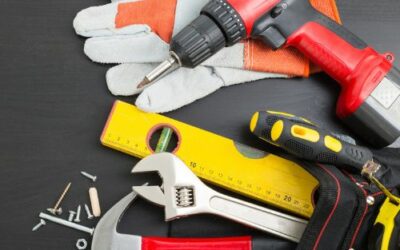
How to Track Your Tools? The Guide to GPS Tracker for Tools
Losing tools may be a catastrophe for companies, small contractors or major construction companies alike. It’s not only about the expenses of replacing the absent instruments; when your equipment vanishes, production declines, deadlines are missed, and frustration results. Sadly, tool theft is a regular occurrence on construction sites and something companies have to give great thought to.
Missing tools cost companies thousands in losses and wasted hours, so they go beyond just annoyance. Effective tracking solutions guarantee that everything is where it should be, thereby enabling your company to run as it should. Saying goodbye to lost or stolen tools is possible with a GPS tracker for tools. Although you may need an extra degree of openness, QR code asset tags let you easily measure usage, update content, and track last-seen sites.
Here is where GPS asset tracking finds use.
Attaching to your equipment, a GPS tracker for tools is a small but mighty gadget that shows the location via an app or web platform. Using GPS tool tracking in your company will not only help to stop loss but also improve security and simplify administration. This book will go over the specifics of GPS trackers for tools and how they might revolutionise your business.
Why Tool Tracking is a Must-Have for Every Business
Combat Tool Theft with GPS Tracking
In sectors like trade and construction, tool theft accounts for billions of annual damages, not least of which are financial. Particularly on busy job sites, tools are simple targets for criminals. Losing even a few basic tools might seriously disturb your business.
Regarding security, a GPS tracker for tools marks a revolution. Attaching a GPS tracking device for tools to your machinery not only discourages criminals but also helps you to recover taken tools. The real-time location function gives authorities the exact data required for recovery and lets you rapidly find misplaced tools.
Keep Projects on Schedule by Minimizing Downtime
When a tool disappears, it’s not only about replacing it—it’s also about the time lost looking for or substituting it. Every minute you search for a missing tool is a minute not spent working, directly affecting your project schedule and bottom line.
Your team can rapidly find lost equipment using a GPS tracker for tools, therefore preventing delays and reducing the financial effect of downtime. Whether it’s a little hand tool or a bigger piece of machinery, you can be confident everything is accounted for and help to keep projects on schedule.
Take Control of Your Tool Inventory
Keeping a large tool inventory might be a logistical nightmare, particularly if you have several job sites to oversee. Without a good system in place, tools might be left behind on-site, double-purchased, or lost.
One answers with a GPS tracker for tools. Tracking industrial tools’ geolocation automatically helps inventory control. At the end of the day, you can check tool use, know who is in charge of each item, and make sure everything is accounted for. Inventory control flows naturally using a GPS tool tracking system.
GPS Trackers: How They Work and What You Need to Know

So, what exactly is a GPS tracker for tools? These devices use the Global Positioning System (GPS) to determine the exact location of the tool. The tracker communicates with satellites to find its position, which is then relayed back to you via an app or web platform.
In a GPS asset tracking system, the trackers are attached to your tools, allowing you to monitor their movement, set boundaries (geo-fencing), and even receive alerts if something leaves a designated area. Whether you’re keeping track of heavy-duty equipment or small hand tools, GPS trackers ensure nothing is ever truly lost.
The process of tracking your tools with a GPS tracker is simple:
- Tag your assets with GPS tags.
- Link the GPS tags to the assets’ profiles in your asset management system.
- Start monitoring asset movement.
Tracking asset movement is crucial within any industry. From healthcare to construction to an office, you need to know where your assets are.
In the construction industry, tools move between sites frequently and may sit in a van for long periods of time. GPS tagging and tracking shows which tools are in use and which site they’re on, allowing for greater efficiency when building.
Types of GPS Tracker for Tools
Hardwired GPS Tracker
Hardwired GPS trackers for tools are permanently installed on larger equipment. They draw power from the tool’s electrical system, meaning you won’t need to worry about battery life. This type of tracker is ideal for high-value assets like generators, forklifts, or other heavy machinery that require constant monitoring.
Battery-Powered GPS Tracker
Battery-powered GPS trackers for tools are incredibly versatile. These small, compact devices can be easily attached to handheld tools, power equipment, or machinery that moves frequently between job sites. Battery life varies depending on the model, with some lasting months or even years before needing a recharge or replacement. Battery-powered GPS tool trackers are a great choice for small tools that need tracking across multiple locations.
Bluetooth Tracker vs. GPS Trackers
While Bluetooth trackers are often used for small equipment tracking devices, they operate differently from GPS tracking devices for tools. Bluetooth trackers work within a limited range (usually about 100 meters) and rely on nearby devices to report location. This makes them useful for indoor or confined workspaces. However, for more comprehensive, long-distance tracking across job sites, GPS tracking for tools is far superior in providing real-time, long-range updates.
Essential Features of GPS Trackers for Tools
Essential Features of GPS Trackers for Tools
Real-Time Tracking for Precision
One of the most critical features of a GPS tracker for tools is real-time location tracking. This allows you to pinpoint exactly where each tool is at any moment, enabling you to respond quickly if a tool is misplaced or stolen. With this feature, you can keep your projects running smoothly and recover lost tools faster.
Geo-fencing and Alerts for Added Security
Geo-fencing allows you to set virtual boundaries around your tools. If a tool leaves the designated area, you receive an instant alert. This is especially useful for preventing theft, as you’ll know immediately when something is wrong. A tool GPS tracker with geo-fencing gives you complete control over your equipment, even when it’s not in your direct line of sight.
Long-Lasting Battery Life
Battery life is a crucial consideration for GPS trackers for tools, especially if you’re using battery-powered devices. The longer the battery lasts, the less you need to worry about recharging or replacing it. Be sure to select a tracker with a battery that fits your operational needs and provides consistent, reliable tracking.
Data Logging and Reporting for Easy Management
Many GPS tool tracking systems offer additional features like data logging and reporting. These tools allow you to see patterns in tool usage, generate reports, and manage check-ins/check-outs automatically. With this data, you can optimise your tool usage and avoid unnecessary downtime or equipment purchases.
Choosing The Best GPS Tracker for Your Business
Key factors to keep in mind when selecting a GPS tracker:
Tool Size and Mobility: The size and mobility of your tools will largely determine the type of GPS tracker for tools you need. For large, stationary equipment, hardwired trackers are ideal. For smaller tools, a battery-powered option offers greater flexibility and ease of use.
Environmental Durability: Tools are often exposed to extreme conditions, such as rain, dust, or heavy impacts. Choose a GPS tracking device for tools that is durable enough to withstand these challenges. Look for waterproof and dust-resistant models, especially if your tools will be used in tough environments.
Ease of Installation and Operation: The tool tracker tag should be easy to install and use. Some trackers come with adhesive backs, while others may require a more permanent installation. Make sure that the installation process doesn’t interfere with the tool’s functionality and that it’s simple enough for your team to manage.
Battery Life and Maintenance: If you’re opting for battery-powered tracking tags for tools, consider the battery life. Look for models that offer extended battery life and easy recharging or replacement options. This ensures you won’t have to worry about frequent maintenance or tracker downtime.
Popular GPS Trackers in the Market
Several brands stand out in the world of GPS trackers for tools and equipment. Some of the most reliable models include:
ToolHound GPS Trackers: Known for their robust and durable trackers, ToolHound offers real-time tracking, geo-fencing, and data logging capabilities. These trackers are great for managing large tool inventories and ensuring total control over your assets.
Trak-4 GPS Tool Trackers: Trak-4 provides compact, battery-powered GPS tracker for tools that are ideal for small to medium-sized equipment. With long battery life and easy-to-use features, Trak-4 is a top choice for businesses looking to track multiple tools across job sites.
Tile Pro Bluetooth Trackers: While not a full GPS tool tracking system, Tile Pro is an excellent Bluetooth solution for smaller tools that remain within a controlled area. It offers short-range tracking and is a cost-effective solution for indoor tool tracking.
The Benefits of QR Code Asset Tags

We would still recommend tracking your tools with QR codes, too, for a number of reasons.
QR codes allow for instant retrieval of an asset profile. All it takes is a scan of a QR, and then you can easily log maintenance, issues, reminders, asset movement, and equipment check-in and check-out.
Every scan of a QR tag also updates the user who last scanned it. So, with GPS tagging, you’ll be able to see where an asset is, as well as who has been interacting with it.
Unlocking the Full Potential of GPS Trackers for Tools
A GPS tracker for tools offers unbeatable security. By knowing the location of your tools at all times, you can prevent theft and respond quickly if a tool is taken. The real-time tracking features allow for fast recovery, ensuring that stolen tools are swiftly returned.
With a tool tracking GPS, you can keep tabs on who is using which tool, when it was checked out, and where it is being used. This transparency boosts accountability among your employees and ensures that tools are returned promptly at the end of each day.
Gone are the days of wasting time searching for misplaced tools. With GPS tracking tools, you know exactly where everything is, allowing you to manage your inventory with ease. GPS tags for equipment help automate check-ins and check-outs, reducing human error and keeping your projects running smoothly.
Overcoming Challenges in Tool Tracking
Keeping Trackers Powered Up: Battery management can be a challenge with battery-powered GPS trackers. To avoid downtime, consider trackers with long battery life or set up a maintenance schedule to ensure batteries are recharged or replaced as needed.
Mitigating GPS Signal Loss: In some environments, GPS trackers for tools may lose signal, especially indoors or underground. To combat this, use a combination of Bluetooth and GPS trackers to ensure consistent coverage across all work areas.
Managing Data Effectively: With so much data coming from your GPS tracker for tools, it can be overwhelming. Use data logging and reporting features to focus on actionable insights that help optimise tool usage and improve inventory management.
Why GPS Tags?
Investing in a GPS tracker for tools is a smart move for any business looking to improve tool security, boost accountability, and increase efficiency. At itemit, we chose to implement GPS tagging because it fills any gaps in your asset tracking and management.
Now, you have total control over your assets and their movements. You can track and manage your tools and equipment, then export customisable reports to view how long an asset has been in a location or how many times tools have needed maintenance.
You can run these reports at any frequency you need, including annually, quarterly, weekly, and daily. Ultimately, this gives you complete transparency over where assets are and what they’re doing.
To find out more about how to track your tools using GPS tracking, you can contact us by email at team@itemit.com, call us at +44 1223 421611, or fill in the form below.

Try itemit
Choose a better way to track
your assets.
Start your free 14-day trial now!

Keep Learning
itemit Blog
Tips, guides, industry best practices, and news.
Why Your Library Needs Asset Tracking Software
Your library needs a tracking system so you know where your inventory is all of the time. Discover why an RFID asset tracking system is ideal!
How To Switch To Asset Tracking Software
Have more than a few assets and want to have more control over them? Read this post to find out how asset tracking software can help!
Tool Maintenance Made Easy
Would you like to keep your tools in a better condition? read this post now to find out how using pre-emptive maintenance can help!

